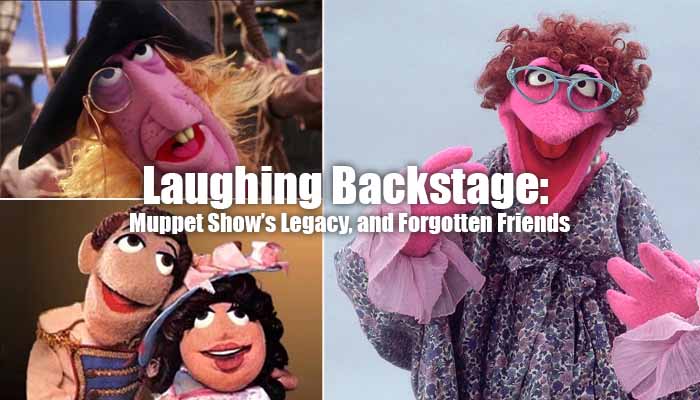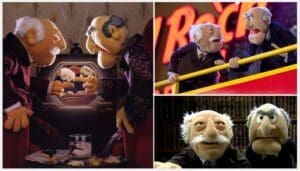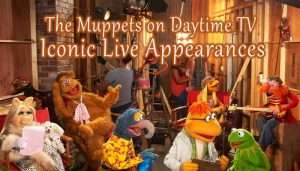The Muppets are still beloved worldwide – Kermit & co. remain pop-culture icons. The Muppet Show (1976–1981) was a one-of-a-kind variety series created by Jim Henson. It combined backstage vaudeville chaos with on-stage sketches and musical numbers. Each episode featured Kermit the Frog as the beleaguered host, trying to keep Miss Piggy, Fozzie Bear, Gonzo and the rest of the gang in line – a recipe for riotous slapstick and absurd humor that delighted kids and adults alike. After ABC passed on two pilot specials, British TV mogul Lew Grade agreed to co-produce the series (with the condition it be filmed at ATV’s Elstree studios in England). The show premiered in the UK in September 1976 (and later in syndication in the US) and ran five seasons (120 episodes) through 1981. Its wry, self-aware style – mixing burlesque, parody and innocent “kid-safe” gags – gave it broad appeal. As one writer put it, it had “a little something for everyone: the Muppets themselves for the kids, instantly recognizable guests for the adults, and a non-stop barrage of jokes for everyone”.
Star Power on the Stage
The Muppet Show became famous for its all-star guest lineup. Each week a celebrity (the “special guest star”) shared the stage with the Muppets, often in hilarious, musical and sketch routines. Notable guests included Steve Martin, Dom DeLuise, Ethel Merman, Vincent Price, Elton John, Diana Ross, Mark Hamill, Roger Moore, Michael Caine, John Cleese and many more. (Even British legends turned up: for example Peter Sellers appeared in one episode playing multiple characters rather than himself.) Some musical numbers became classics: in one episode Elton John performed “Crocodile Rock” backed by a trio of crooning crocodile puppets Others were simply campy fun: Sylvester Stallone once sang a (hilariously) off-key duet with a lion. The mix of big-name stars and unpredictable puppet performers made every episode a unique treat.
Quirky Backstage Crew: Forgotten Muppet Characters
- Mildred Huxtetter – A prim, scholarly purple woman with a big beak-nose. Mildred is “aristocratic and educated” – in fact, her full title boasts BA, MA, PhD, OBE and the letters RSVP as a joke about her endless credentials. She usually appears silently in the background, often in musical numbers. Fans remember her especially from the “At the Dance” routines, where she demurely waltzed with George the Janitor (see below). Mildred never had lines of dialogue, but her snobbish posture (and degree list) was a fun running gag.
- Hilda the Wardrobe Mistress – The elderly seamstress who ran the costume shop in Season 1. Hilda (performed by Eren Ozker) spoke with a thick German/Eastern-European accent and appeared almost exclusively backstage. Onstage she famously introduced Vincent Price in a Transylvania sketch. In one great bit, Hilda tries on a wig, corset and high-heeled boots to prove she’s not really 35 – delivering the line “I’m not really 35!” with a toothy grin. (After Ozker left the show, the Hilda character quietly disappeared.)
- George the Janitor – The grumpy old custodian who literally loves only his mop. George is first seen sweeping in the wings and muttering at anyone nearby. He mostly appears in Season 1, usually onstage during dance numbers (often paired with Mildred) or cleaning up backstage. In one memorable sketch he “discovers” the Raggmopps – a trio of singing, dancing mop puppets – and proudly brings them to the stage. After Season 1, George was largely replaced by a newer janitor Beauregard, but his crotchety presence made early episodes special.
- Crazy Harry – The Muppet Show’s pyrotechnics nut. Harry has wild eyes, a greasy shock of hair and an infectious maniacal laugh. His shtick was simple: whenever the word “boom” or any explosive-related idea came up, Harry would burst in shouting “Did somebody say BANG?” before setting something on fire or exploding. He usually just triggers off-camera blasts, but in one sketch (Episode 306) he even helped Jean Stapleton play an “explodaphone” to accompany her song. Though a minor player, Crazy Harry’s comedic one-note role (blowing stuff up at every chance) is a favorite to hardcore fans.
Other oddball characters crop up in bits: the dopey stagehand Beauregard (who takes over janitor duties), the sneezily flirtatious Wanda, even characters like Lew Zealand (with his boomerang fish) and Crazy Harry’s “Mad Harry” persona. But Mildred, Hilda and George stand out as the most obscure regulars – the kind of background Muppets that loyal fans love to spot or collect trivia about.
Legacy & Nostalgia
Even 40+ years later, The Muppet Show endures. At its peak it was a global phenomenon – by the late 1970s it was seen by roughly 235 million people in over 100 countries. (In Britain alone it quickly drew some 14 million viewers every Sunday during its first season.) Its characters have become ingrained in the culture – as Smithsonian magazine observes, figures like Kermit “have become part of American culture and… have a significant place in entertainment history and in viewers’ hearts”. Streaming re-releases (e.g. on Disney+) have found new audiences, and parents still introduce the witty puppets and their songs to their kids. Fans note that the show’s warmth and humanity hold up: “deep down we all want to be accepted and loved,” wrote writer Joshua Gillespie, “and that’s what the Muppets represent”. Its humor also remains surprisingly timeless: Business Insider points out that the series appeals to “kids, teens, adults… weirdos, hipsters, cynics” alike even today. In short, everyone’s a Muppet fan at some level, and The Muppet Show’s legacy of laughter lives on.
Fun Facts & Trivia
- Global Audience: By its third season (1978) The Muppet Show was broadcast to 235 million viewers weekly worldwide (thanks to syndication and international TV sales). This followed strong early success: it had about 14 million UK viewers in its first season.
- Award-Winner: The series was a critical hit as well as a ratings star. It won four Emmy Awards, three BAFTAs (British Academy TV Awards), a Peabody Award, and even a Grammy (for its soundtrack).
- Animal’s Drums: The ferocious drummer Animal looks like he’s going berserk on the kit, but the real percussion was played by jazz great Ronnie Verrell. In the famous Rita Moreno “Fever” number, Animal’s drumming track was actually recorded by Verrell (Animal just pantomimed wildly along).
- From TV to Film: Thanks to its success, the Muppets soon hit the big screen. Producer Lew Grade’s backing of the series led to him financing Jim Henson’s first two feature films: The Muppet Movie and The Dark Crystal. In fact, Grade later quipped about one flop (“Raise the Titanic”) that “It would have been cheaper to lower the Atlantic,” but The Muppet Show itself was a clear success story.
- Behind the Scenes: Most of the core Muppet performers (Jim Henson, Frank Oz, Jerry Nelson, Richard Hunt, Dave Goelz, etc.) had cut their teeth on Sesame Street and other Henson projects. The Muppet Show let them stretch into adult comedy and satire. (One tidbit: the first season still had an all-female Muppet performer, Eren Ozker, who played Hilda and some bit parts. After she left, the cast became almost entirely male puppeteers.)
Today, devotees cherish all of these bits of lore. Fans can recite Kermit’s “Rainbow Connection,” poke fun at Miss Piggy’s diva antics, or still laugh when Fozzie Bear throws an open-mic tantrum. For many, The Muppet Show isn’t just a TV series – it’s a treasured memory, a piece of happy childhood (or family) viewing that still brings smiles.




